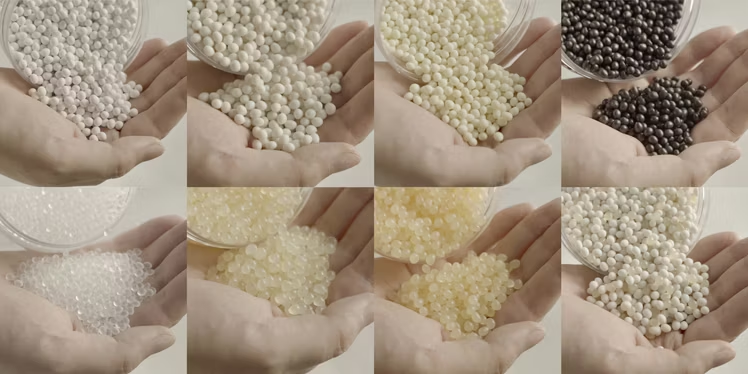Introduction to Edge Banding
Edge banding is a crucial finishing process used extensively in furniture, cabinetry, and architectural millwork manufacturing. By applying a thin strip to the exposed sides of wood panels, such as MDF or plywood, edge banding transforms raw, vulnerable edges into surfaces that are not only visually seamless but also highly resistant to moisture, chipping, and everyday wear. The integrity of an edge band depends on more than just the banding material itself—the selection of a suitable adhesive plays a pivotal role in delivering a durable, invisible bond. Among available solutions, EVA adhesive for edge banders is a leading choice that unites performance and practicality in modern manufacturing environments.
As consumers increasingly demand furniture with precision-finished edges and unmatched longevity, manufacturers are under pressure to select adhesives that meet both aesthetic and structural requirements. EVA adhesives, in particular, provide a robust bond that supports high-volume, automated production lines while also meeting expectations for product durability and refined appearance.
Understanding EVA Adhesive
Ethylene Vinyl Acetate (EVA) adhesive is a thermoplastic resin formulated for the high-stress demands of furniture edge banding. Due to its rapid melting and setting behaviors, EVA streamlines the production process and enables precise, uniform bonds on various panel substrates ranging from particleboard to laminates. As noted in Woodshop News, these adhesives are designed to maintain strength and consistency under demanding conditions, ensuring that EVA maintains its hold regardless of the complexity or curvature of the edge being banded.
Properties of EVA Adhesive
- Exceptional flexural strength and elastic recovery, essential for edges prone to impact or frequent use.
- Reliable thermal stability for bonds that endure temperature variation during manufacturing and end-use.
- Economical usage, allowing quality manufacturing without inflating operational costs.
Advantages of Using EVA Adhesive in Edge Banding
- Strong Bonding:EVA adhesives create a resilient connection between the band and substrate, resisting separation and delamination.
- Swift Processing:Fast set times optimize production speed, reducing cycle time and supporting just-in-time manufacturing models.
- Impact Absorption:The flexibility of EVA reduces the risk of splits or cracks, especially beneficial for commercial and high-traffic furniture pieces.
- Heat and Environmental Resistance:Designed to perform in environments where fluctuations in humidity and temperature might otherwise compromise other adhesive types.
- Lower Costs:EVA adhesives strike a balance between affordability and quality, making them a sustainable option for businesses seeking efficiency across large-scale operations.
Application Process of EVA Adhesive in Edge Banding
- Surface Preparation:Ensure all surfaces are dust-free, clean, and dry to maximize adhesion and prevent air bubbles or voids.
- Melting the Adhesive:Bring EVA to the recommended processing temperature (typically 150°C–200°C) with precise controls to achieve optimal flow and wetting properties.
- Adhesive Application:Apply uniformly using advanced rollers or slot nozzles specifically tailored to the banding material’s thickness and width.
- Placement and Bonding:Use automated edge banders to apply consistent pressure, guaranteeing a seamless attachment and optimal cure rate.
- Finishing:Trim excess banding and polish the final edge to ensure both visual appeal and tactile smoothness.
Environmental Considerations
Sustainability is no longer a fringe concern—it’s central to product selection for edge banding adhesives. Forward-thinking manufacturers actively develop bio-based EVA adhesives featuring renewable raw materials to cut carbon emissions and address ecological footprints. These products retain high performance standards while aligning with green building certifications and consumer expectations.
Additional initiatives, such as optimizing adhesive application melters for energy efficiency, recycling trimmings, and minimizing volatile organic compound (VOC) emissions, underscore the industry’s shift toward responsible manufacturing practices.
Enhancing edge banding quality is crucial in modern furniture and cabinetry manufacturing, and EVA (Ethylene Vinyl Acetate) adhesive plays a pivotal role in achieving superior results. Known for its strong bonding capabilities, fast setting time, and ease of use, EVA adhesive ensures seamless attachment of edge bands to various substrates, including MDF, particleboard, and plywood. Its excellent heat resistance and durability contribute to a clean, long-lasting finish that meets the aesthetic and functional demands of today’s high-quality production standards. As manufacturers strive for efficiency and precision, EVA adhesive remains a trusted solution in delivering consistent edge banding performance.
Conclusion
EVA adhesive has established itself as a foundational technology for edge banding operations, striking a reliable balance between cost, strength, and manufacturing integration. By selecting the right adhesive and investing in the latest process control technologies, furniture manufacturers ensure the consistent quality, longevity, and visual refinement that today’s market expects. As new advancements continue emphasizing both sustainable options and digital precision, EVA adhesive’s relevance to efficient, high-quality assembly remains stronger than ever.
Read Also: techinfobusiness.com



